In modern business operations, recruitment flowcharts are not only a core tool for the human resources department, but also the key to ensuring that the company's talent introduction is efficient and orderly. This article will explore the recruitment process and how to draw a recruitment flowchart , providing you with a comprehensive recruitment process guide.
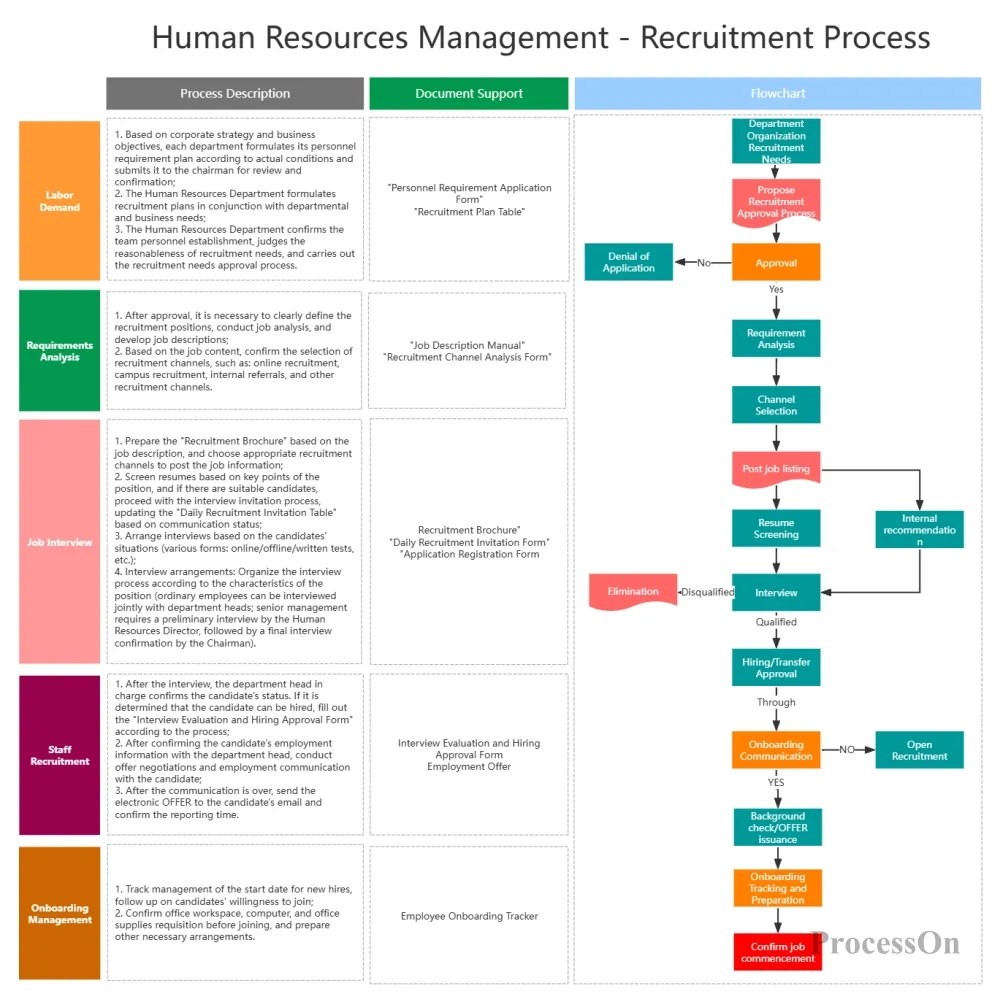
Use this template - Recruitment Flowchart
The recruitment process is a series of orderly steps that companies follow to attract, screen and ultimately hire the right talent. A complete recruitment process usually includes the following key steps :
1. Demand analysis and job definition
Demand determination: The company determines the positions to be recruited and their job responsibilities based on business development needs.
Job Description: Write a detailed job description, including job responsibilities, job requirements, educational background, work experience, etc.
Competency model: Develop or refer to an existing competency model to identify the key capabilities and qualities required for the position.
2. Recruitment plan formulation
Budget and Timetable: Develop a recruitment budget and timetable based on the importance and urgency of the position.
Recruitment channel selection: Determine which recruitment channels to use, such as company website, social media, recruitment websites, headhunters, campus recruitment, etc.
3. Post job information
Write job advertisements: Write attractive job advertisements based on the job description.
Post an Ad: Post the job ad to the selected recruitment channels.
4. Resume screening and preliminary assessment
Resume collection: Collect applicants' resumes.
Resume screening: Screen qualified resumes according to job requirements.
Initial assessment: This may include a phone interview, online test, or initial screening interview to further narrow down the candidates.
5. Interview arrangement and conduct
Interview notification: Send interview invitations to the selected candidates, including interview time, location, interviewer information, etc.
Interview conduct: Conduct structured or unstructured interviews to assess the candidate’s skills, experience, cultural fit, etc.
Multiple rounds of interviews: For key positions, multiple rounds of interviews may be required, including HR interviews, department manager interviews, team interviews, etc.
6. Background Check and Employment Decision
Background check: Verify the candidate's educational background, work experience, professional ethics, etc.
Hiring decision: Make hiring decisions based on interview performance, background check results and job requirements.
7. Salary negotiation and employment notification
Salary negotiation: Negotiate with candidates on salary, benefits, etc.
Offer letter: A formal offer letter is sent to the candidate, clearly stating job responsibilities, salary, and start time, etc.
8. On-the-job preparation and training
Onboarding preparation: prepare workstations, office supplies, system accounts, etc. for new employees.
On-the-job training: organize new employees to participate in training on company culture, rules and regulations, job skills, etc.
9. Probationary period management and evaluation
Probationary period arrangements: Set the probationary period duration and clarify the work objectives and evaluation criteria during the probationary period.
Probationary period evaluation: At the end of the probationary period, new employees will be evaluated to decide whether to formally hire them.
10. Feedback and Continuous Improvement
Recruitment effectiveness evaluation: Evaluate the entire recruitment process, collect feedback, and identify areas for improvement.
Process optimization: Based on the evaluation results, the recruitment process is continuously optimized to improve recruitment efficiency and quality.
The recruitment flowchart is a visual tool that uses graphics and arrows to intuitively display the entire process from job requirements analysis to new employee onboarding. Its main functions are :
Clarify steps: Help HR and recruitment teams clearly understand the tasks and responsibilities of each recruitment stage to ensure seamless connection of each link.
Improve efficiency: Speed up the recruitment process by standardizing processes to reduce unnecessary delays and duplication of work.
Optimized decision making: It allows management to quickly identify bottlenecks and problem areas, and make timely adjustments and optimization decisions.
Training newcomers: For new members joining the HR team, flowcharts are an effective way to quickly familiarize themselves with the work process.
In order to create a recruitment flowchart that is both beautiful and practical, it is essential to choose a powerful drawing software. Visio, Word , Draw.io , ProcessOn , etc. are all popular choices. They provide a rich symbol library, templates, and export formats to facilitate team collaboration and sharing. Here we mainly explain how to use ProcessOn to create a recruitment flowchart.
1. Open ProcessOn official website, go to the personal file page, and click Create to create a flowchart . Or go to the template creation page and search for the keyword "recruitment process" to select the template you need.
2. According to the order of the recruitment process, drag the graphics from the graphics library on the left side of the flowchart maker to the canvas, use rectangles to represent each step (such as "demand analysis", "resume screening", etc.), click the "+" on the graphic to connect the steps with arrows to indicate the direction of the process , and the top toolbar supports adjusting the color, font and layout .
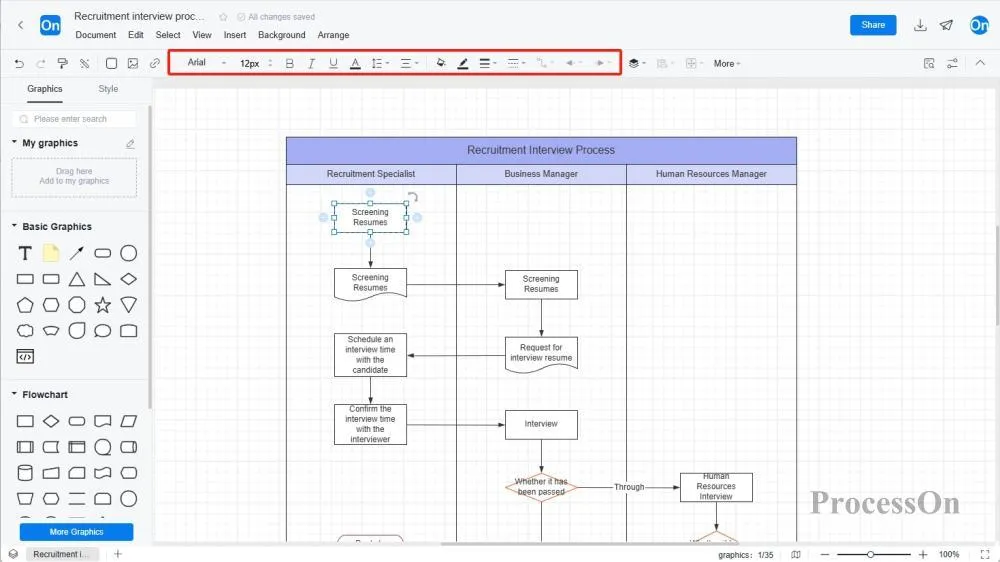
3. Export the flowchart to PDF, PNG or SVG format as needed for presentation in reports or meetings. You can also directly generate a link to share the flowchart with relevant personnel so that they can view or edit it online.
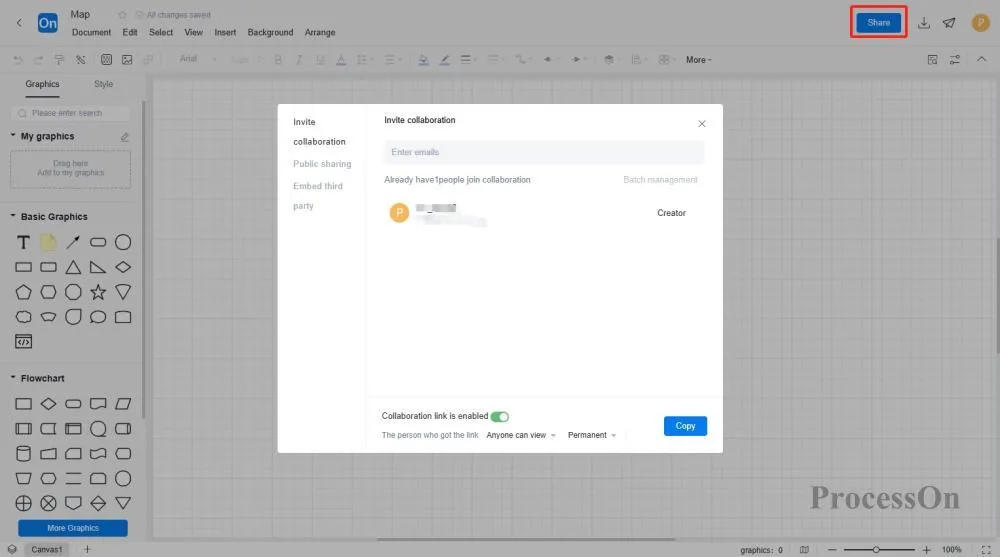
The recruitment processes of different companies may be different. Here are some recruitment flowchart templates from the ProcessOn template community , which can be used for reference or modification.
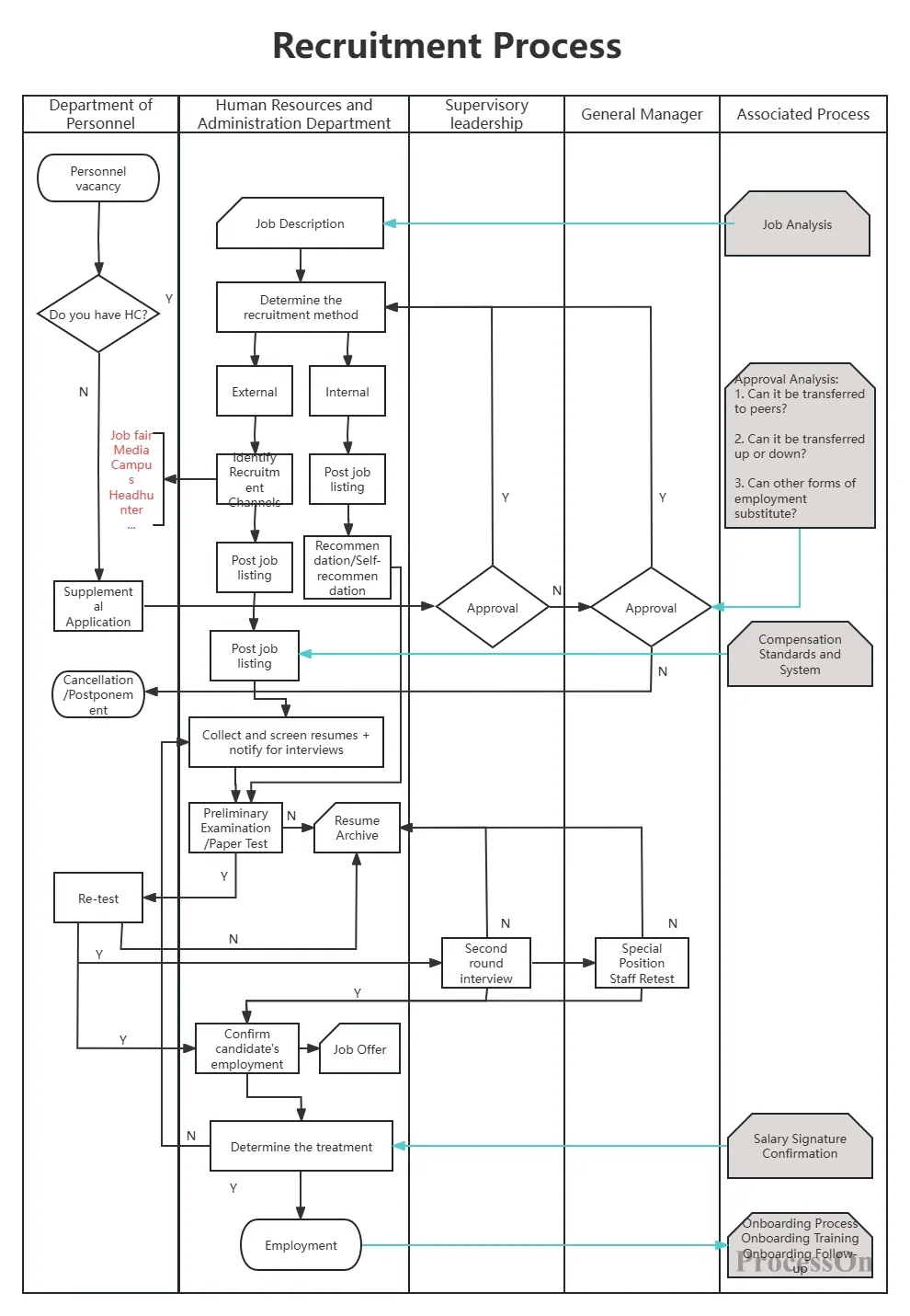
Recruitment and Hiring Flowchart
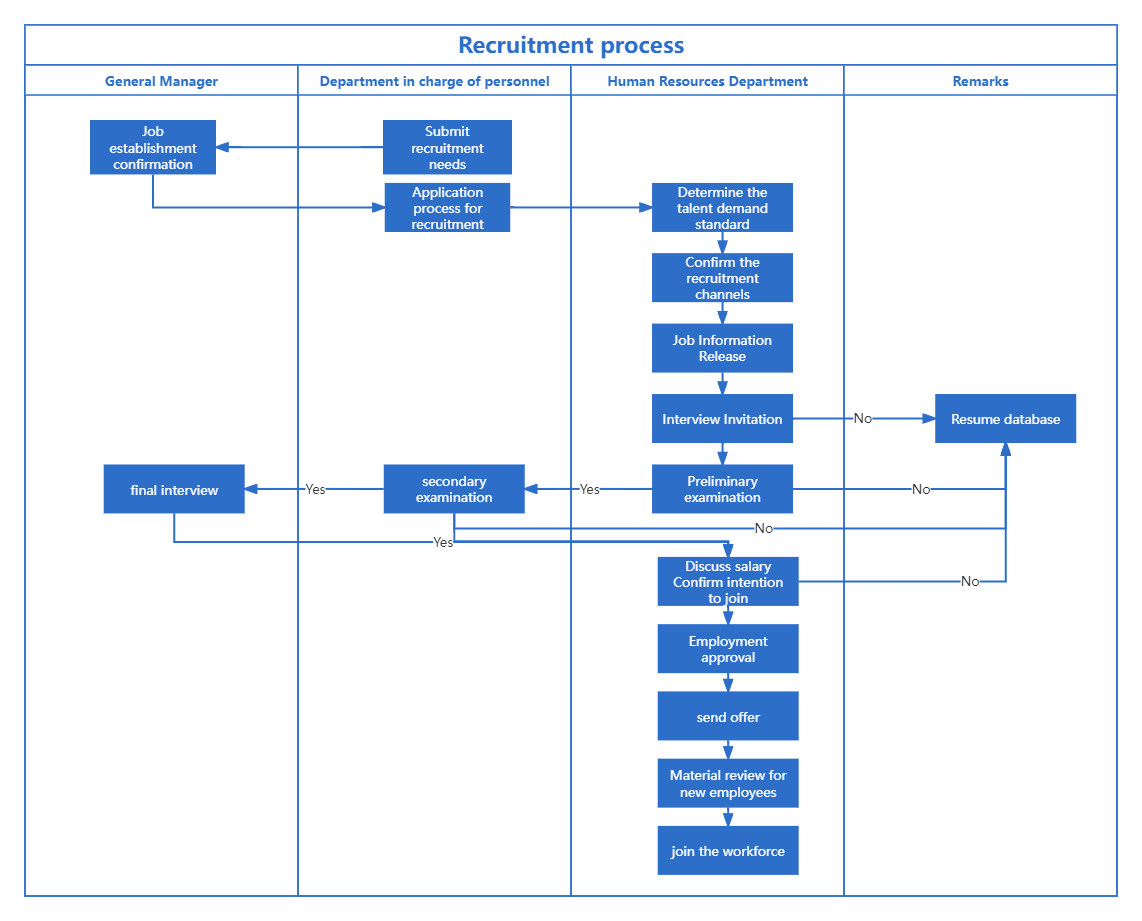
Recruitment process swimlane diagram

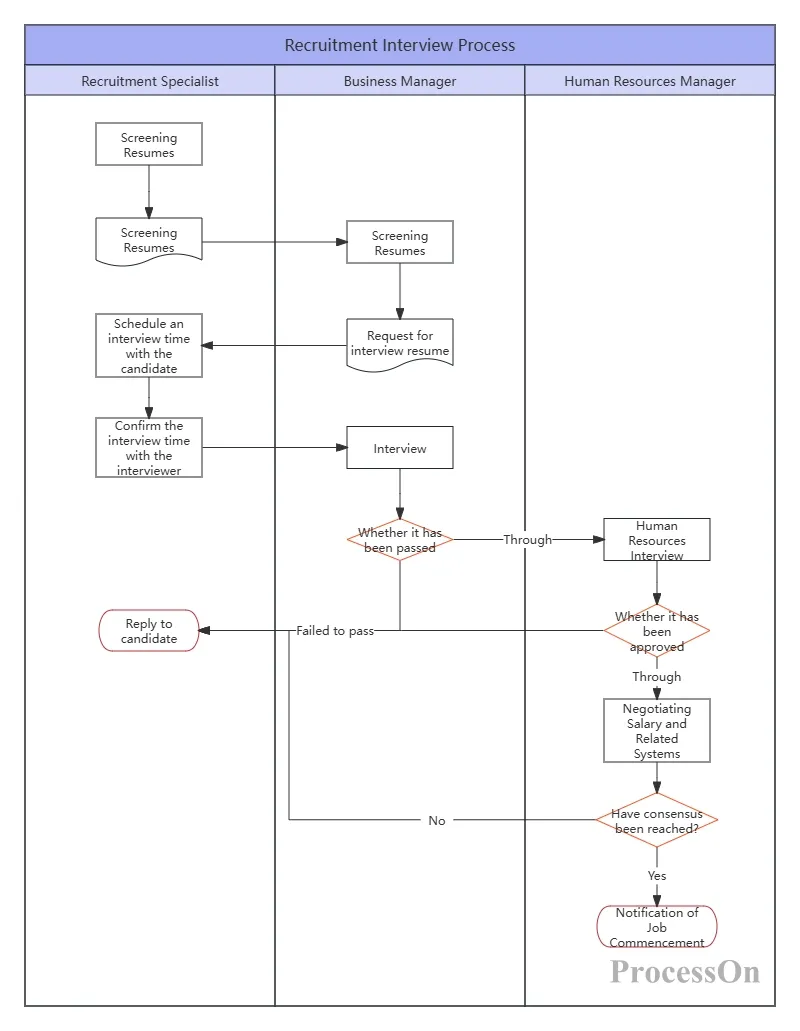
The recruitment process map is not only the basic framework of recruitment work, but also an important tool to improve the efficiency of corporate recruitment, ensure compliance, and optimize the candidate experience. Through careful design and continuous optimization, companies can build an efficient, transparent, and humanized recruitment system to lay a solid talent foundation for the long-term development of the company.